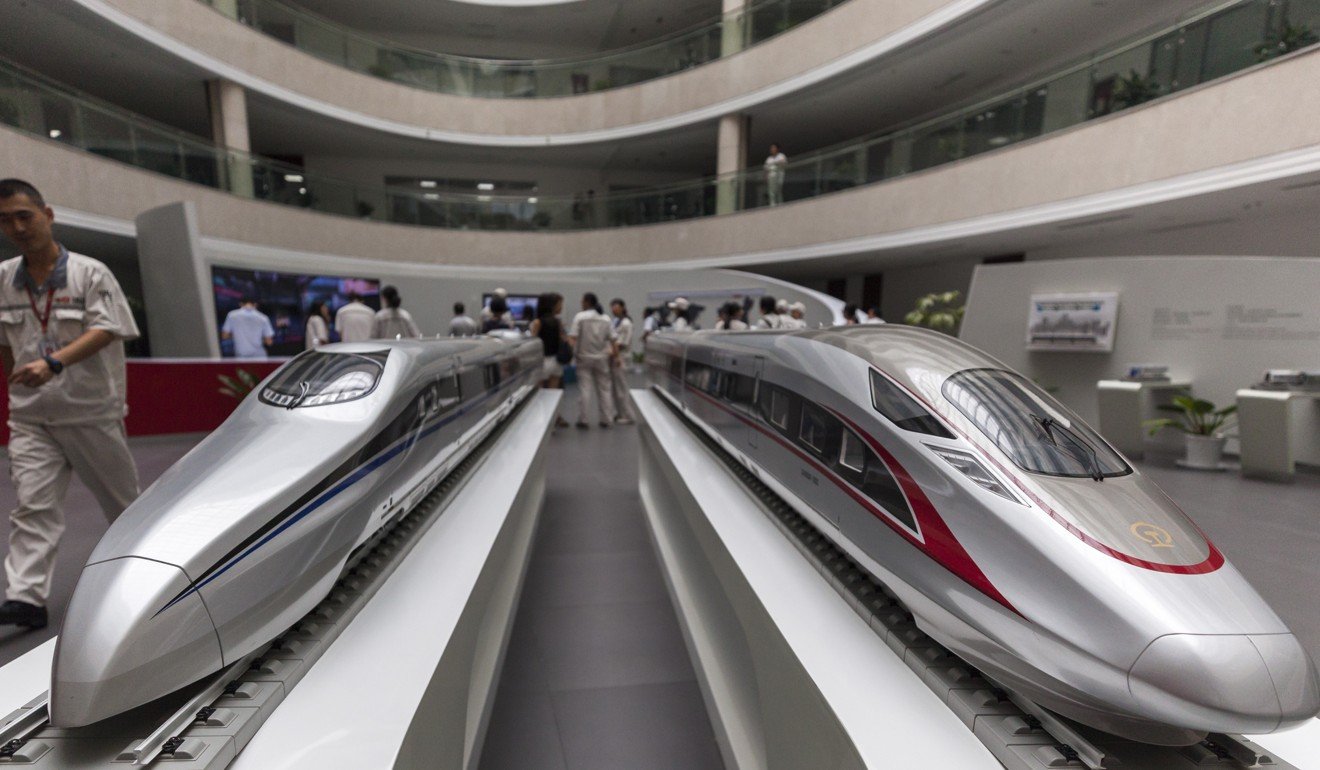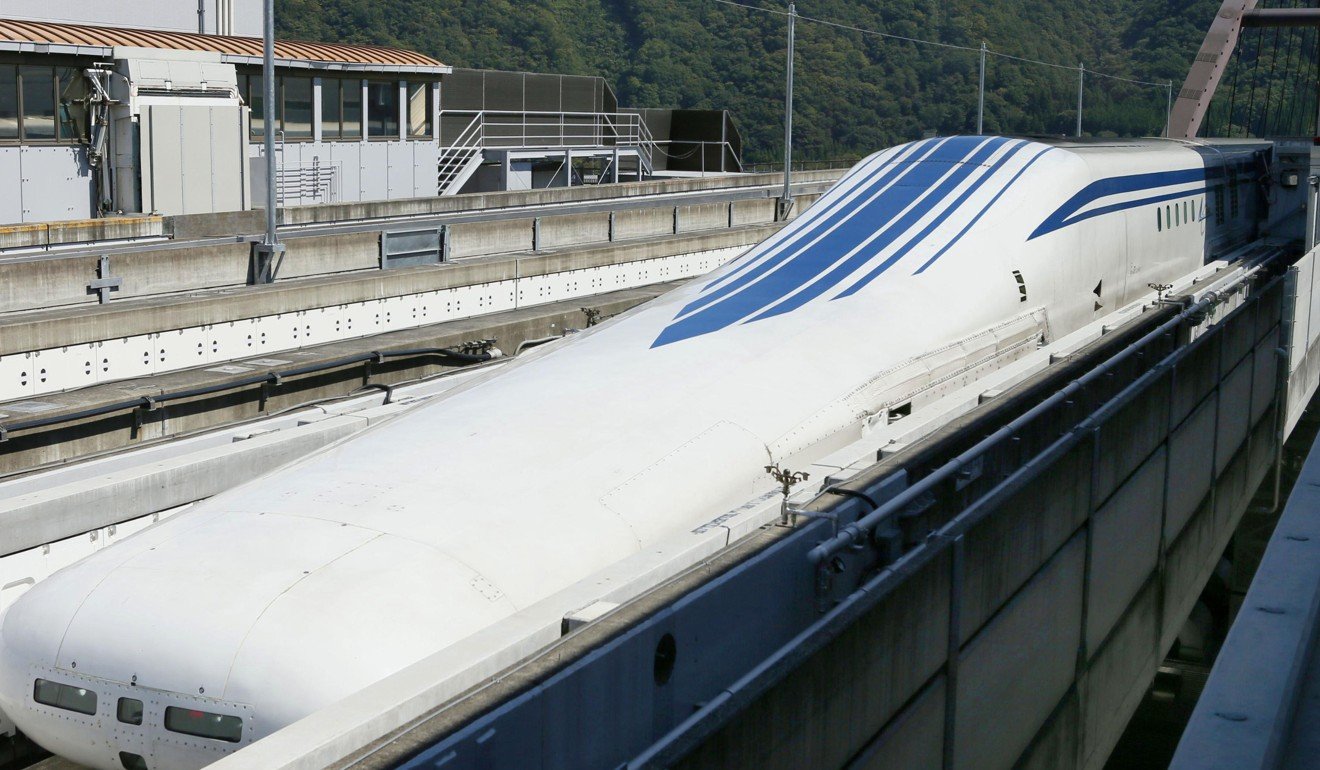
Chinese maglev train capable of travelling at 600km/h on track for 2020 test run as design completed
News confirmed by Liang Jianying of state-owned CRRC Qingdao Sifang, the first and only female chief engineer in China’s high-speed train manufacturing industry
The design for the prototype of China’s first maglev train with a top speed of 600km/h (373mph) has been completed, according to the chief engineer of the country’s leading high-speed train manufacturer.
Liang Jianying from state-owned CRRC Qingdao Sifang said: “We have completed the design for the prototype of the maglev train and started on production of parts.”
Liang was in Hong Kong and speaking on the sidelines of the InnoTech Expo organised by Our Hong Kong Foundation – a think tank set up by former chief executive Tung Chee-hwa – on Friday.
Although the train is designed to hit a top speed of 600km/h, she said the company was aiming for a “maximum operating speed” of 550km/h.
The train and a comprehensive maglev transport system around it are expected to fill the service gap between the high-speed rail network and aviation. High-speed trains usually operate at speeds of between 200km/h and 400km/h.

Maglev technology moves trains on magnetic fields. Because there is no contact with the tracks and the trains ‘float’, they can travel at higher speeds without friction.
China starts trial run of first home-designed and built maglev rail line
The maglev system was a key project under China’s 13th five-year economic and social development plan rolled out in 2016. As a subsidiary of China’s largest train maker CRRC, Qingdao Sifang has been tasked to complete the first model and a 5km test rail by 2020.
The company is a leading developer and manufacturer of high-speed trains in China, including being behind the Vibrant Express and Fuxing Express running on the recently launched Guangzhou-Shenzhen-Hong Kong Express Rail Link, which connects Hong Kong to the mainland.
Liang said the escalating US-China trade war would not harm the development of China’s high-speed train industry.
This marks our comprehensive grasp of the technologies
“We indeed conduct global procurement of parts for our trains but only a very small portion is bought from the United States,” said Liang, who has been overseeing major high-speed train designs in Qingdao Sifang since 2006.
“Moreover, we can find substitutes on the mainland,” she added.
Liang also emphasised China has mastered many critical technologies in designing high-speed trains since the country launched its industry with models and parts imported from Japan in 2004.
“Our strategy has been one with three steps: import advance technologies from foreign countries, digest and absorb, and eventually develop our own innovations,” Liang said.
Liang and her team built model CRH380A, which has a top speed of 380km/h and has been widely used in China’s high-speed rail network. It was developed after two rounds of intellectual property rights examination in the US in 2010 and 2015.

“More than 930 items of intellectual property were confirmed without any infringement,” Liang said. “This marks our comprehensive grasp of the technologies.”
By the end of 2017, the high-speed rail network on the mainland spanned 25,000km – the longest in the world.
Going to mainland? Express rail opens up direct link to smaller cities
Liang, 46, is the first and only female chief engineer in China’s high-speed train manufacturing industry.
“For engineers, to pursue higher speed on the basis of safety is an eternal goal,” Liang said.
She said Qingdao Sifang had sent engineers to the Shek Kong Depot of Hong Kong’s MTR Corporation to help monitor the high-speed train operation but did not disclose how long they would stay.
“For all the trains we make, we will provide supporting services throughout their life cycle, which is 25 years,” Liang said.

